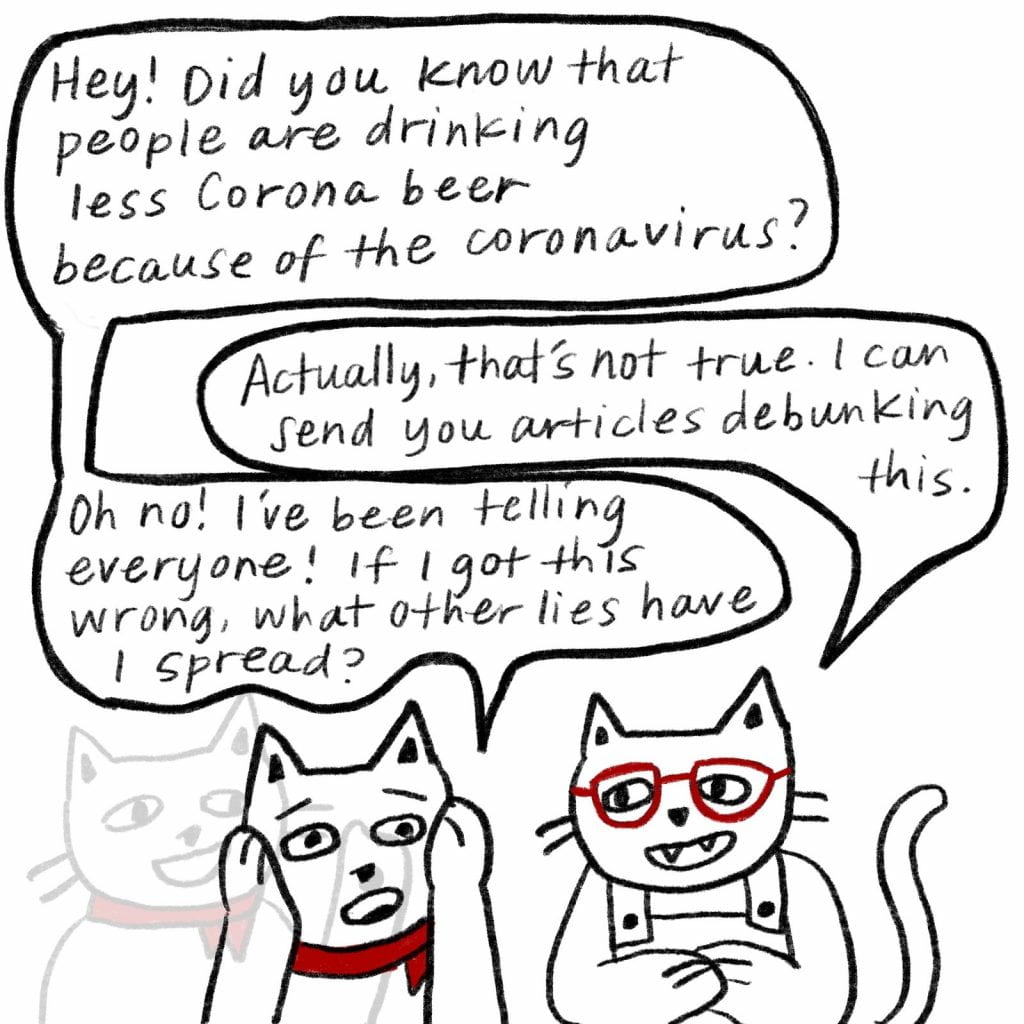
As you’ve probably guessed from the title, webcomics are being discussed as a new method for getting across public health messaging. Alexandra Alberda, a researcher at Bournemouth University, explained some of her ideas about how and why webcomics – and data-comics – work so well at getting across info, with a particular focus on using them during the pandemic.
COVID-19 has been a long and drawn-out catastrophe, and there has been a need to get urgent messages out to the public for everyone’s safety and well-being. But these messages can get muddled, drowned amongst a sea of long press-conferences, Twitter mis-info, and wild conspiracy videos. This is where the unique aspects of webcomics can step in and help.

For a start, comics are easy to engage with for a lot of people, young and old. They have an aesthetic and use of language that is simple enough to be accessible for a very broad target audience. That broad appeal, especially in the context of educating the public about a pandemic, makes them a potentially powerful tool for public health communications.
‘Data-comics’ are something Alberda discussed in her talk as part of the speaker series. Now, the words ‘data’ ‘statistics’ and ‘figures’ are bound to immediately put off a lot of people (myself included) who don’t have a mathematical bone in their body. The same goes for charts and graphs, which can be pretty dry at the best of times. So, data-comics attempt to bridge that gap, and aim to repackage that info – for example, virus R-numbers, infection rates, risk calculations etc. – into something more easily digestible and understandable. Take XKCD, the long-running webcomic that blends scientific topics with sardonic humour and a classic stick-figure aesthetic, or the Graphic Medicine project run by illustrators and academics to see how data-comics can be used in public health communications

At the heart of it all is storytelling. Alberda outlines that a key part of web and datacomics about medicine and public health is transforming a whole mess of disparate facts and figures and putting them into a story format. Storytelling is such an innately human way of making sense complex things and issues. We tell children cautionary tales to warn them of the dangers out there, we package world events and issues into news stories and articles, and we even organise our memories into story-like structures. A great example of this can be seen in a webcomic that’s sprung up specifically to explain coronavirus to kids in a way that hopefully appeals to them through light-hearted dialogue and a fun, childish drawing style.
So, webcomics might just be an ideal way to get public health messages and guidance across effectively and entertainingly to a wide range of people across all demographics, and COVID-19 might just be the push that gets the ball really rolling.
Comic credits, from top to bottom:
Featured image: Malaka Gharib/NPR
Dave Whamond/CagleCartoons.com
Connie Hanzhang Jin/NPR
Randall Munroe/XKCD.com
All images have been used for educational purposes, please contact s4599277@bournemouth.ac.uk for removal.
